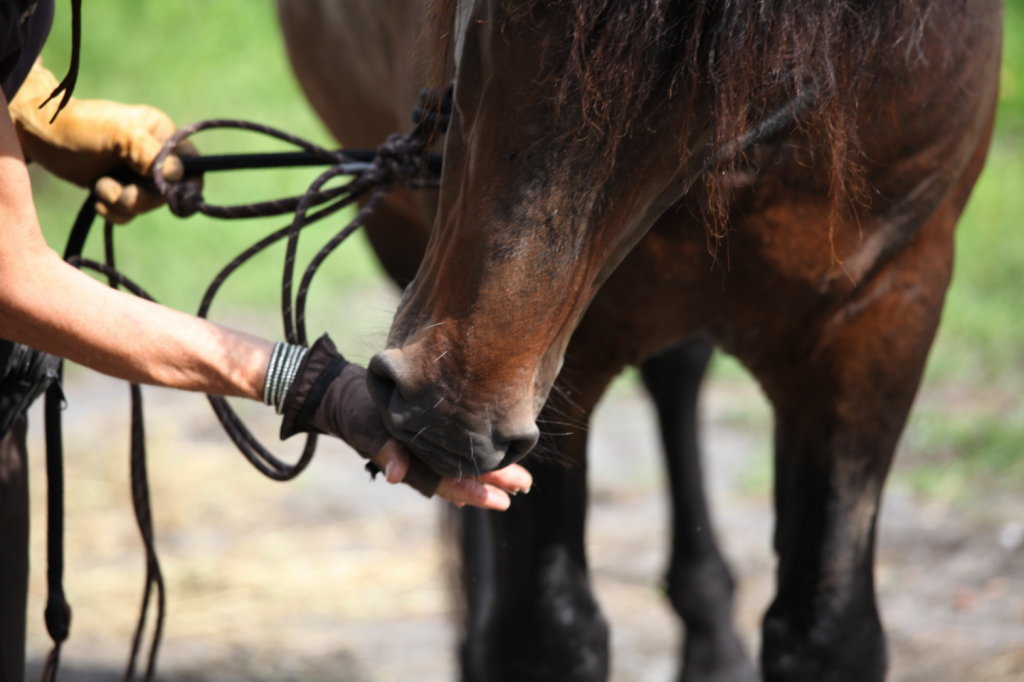It seems that most of our conversations with horses are mediated by some form of restraint: halter, lead line, bridle, side reins, longue line, martingale, etc. Tethering is part of the human-horse thing.
In this picture, I am introducing the rope halter to Nelson. He has seen it before. Bu like many things horse, just because we did it last week does not mean that he is fine with it today. So we go through a chunking down process, breaking putting the halter on into lots of little steps, so that the whole process becomes digestible. What happens after this picture is that I rub the halter all over his body, come to the other (more scary) side of his body and do the same thing there. I put the rope over his neck and ask him to walk with me with just the rope. He thinks that is fine. After a bit, he will calmly let me put the halter on and even consent to being led. But not to being led on his left side, and not to walking into the stall with the halter on. He will however, walk in and out of the stall with nothing on his head as many times as I ask just as nice as you please. It is something about the restraint that he does not trust. In the horse world, restraint has a nasty history. I am more interested in the Buddhist concept of restraint, which has to do with managing one’s reactions.
To build trust and to expand our vocabulary, everything that I do with Nelson with his halter on, I also do with his halter off. This includes picking up his feet, leading, grooming, moving around his whole body in both directions. Three months ago, none of this was possible. Nelson was wild – skittish, distrustful. Bit by bit, we are dissolving some of that wildness, introducing a practice of restraint of body and mind. The reason to do things without the halter is is that I want some parts of my conversations with him to be unimpeded by ropes and tack. Untethered. Eventually, I want him to be ok whether he has the halter on or not. No big deal. So that when he has a halter on he doesn’t panic or refuse something that is actually quite reasonable, like coming into the stall.
To do all of this requires restraint on my part. I have to keep myself in check, staying calm and smooth in my requests, and make my body language comprehensible to him. He has to be able to read me. That means me finding his rhythm, so that we can sync up and work together.
The real thing is this: I am tethered to Nelson by love. He can feel that. When I get it wrong, move too quickly, that bond is what lets us settle fast and get our groove back. It’s not sappy or romantic. It is an undercurrent that I imagine is like the subsonic rumblings of elephants – something that can be felt through the herd.

I love the fullness in the language – restraint and willingness are such beautiful concepts. Thank you.